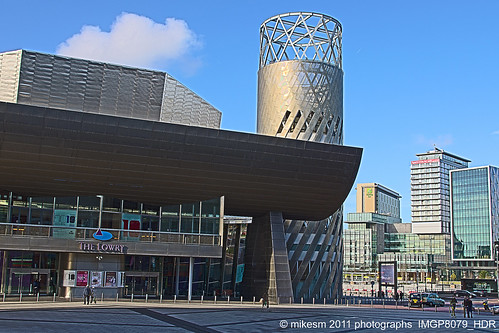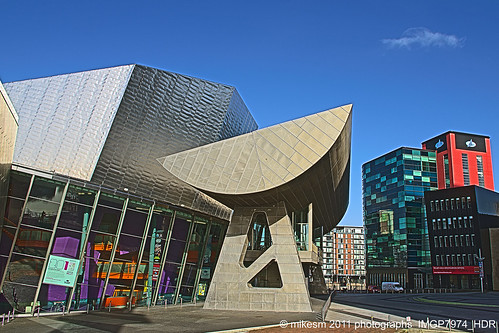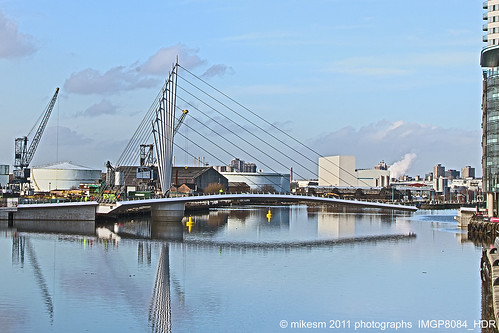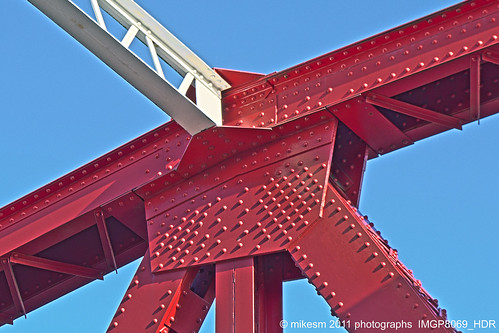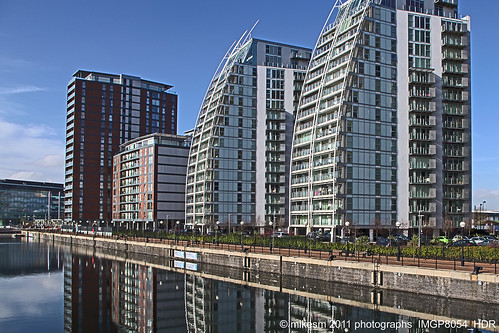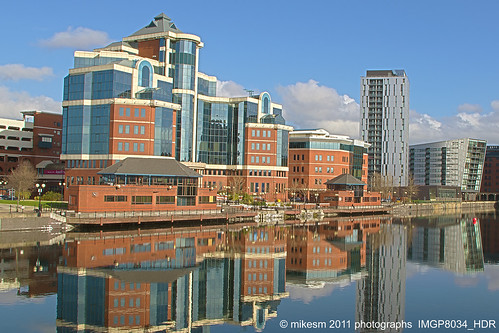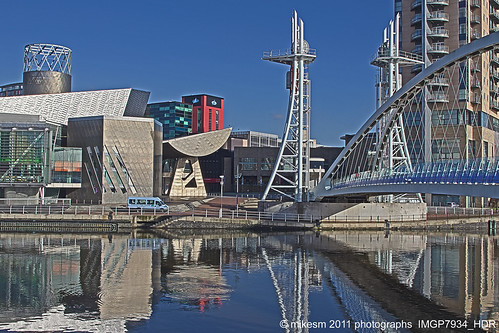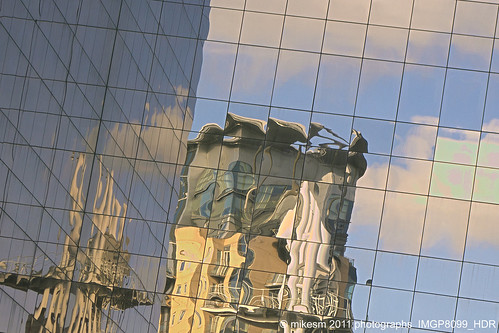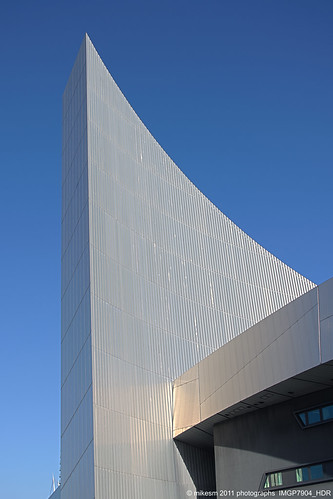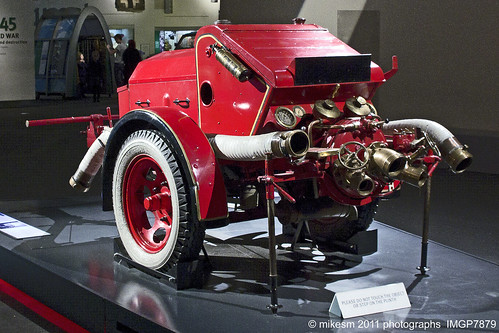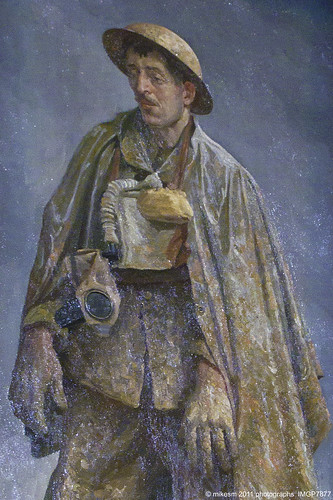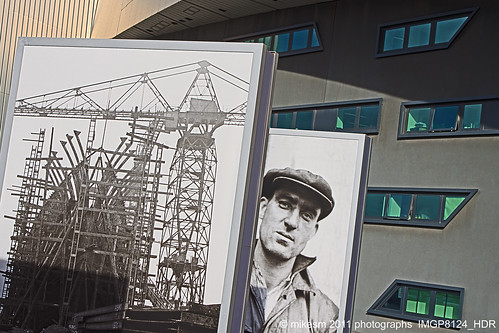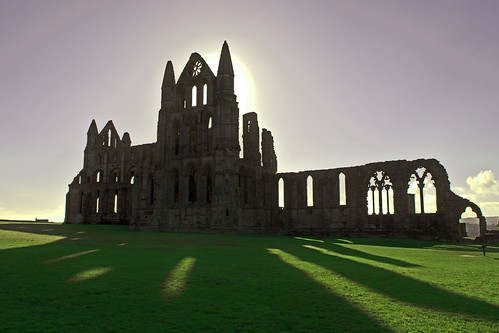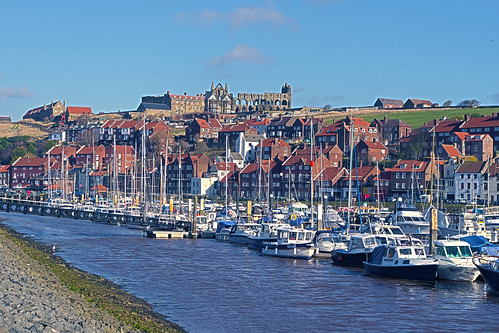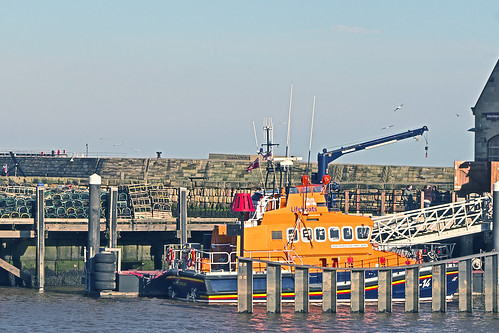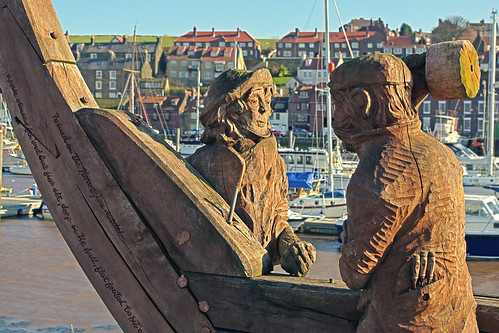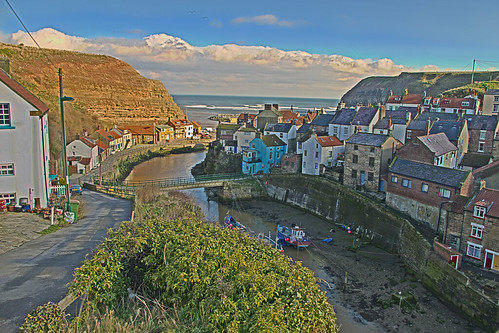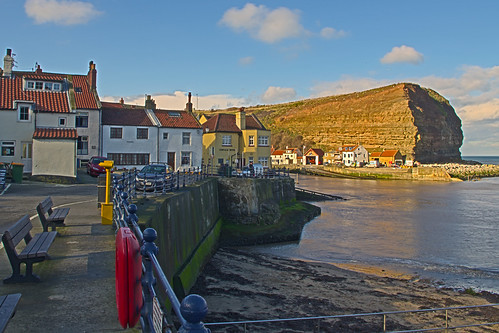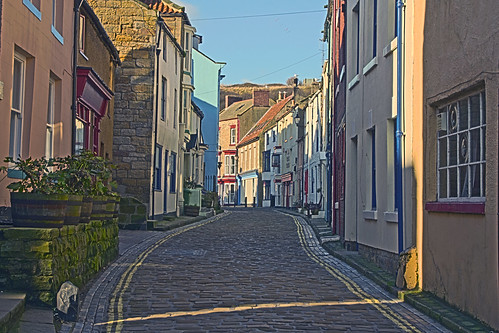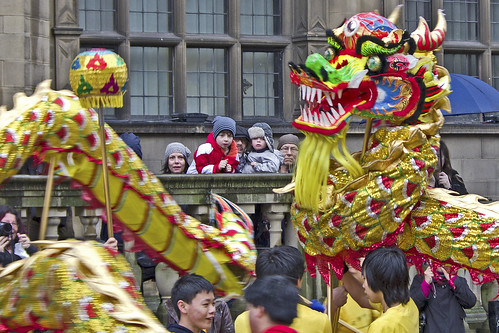The Lowry stands at the end of Pier 8, largely surrounded by the waters of the Manchester Ship Canal. Designed by James Stirling and Michael Wilford, it opened on 28 April 2000 and houses the 1730 seat Lyric theatre, the 466 seat Quays theatre, a range of studio spaces and 17,330 square feet of gallery space. In addition there are cafes, bars and a restaurant on the south-western end of the building, with views over the water to Libeskind's Imperial War Museum North. As the name suggests, the centre is associated with L. S. Lowry, and houses a unique collection of his work. Some of the pieces are on permanent display, whilst others are on loan and may appear in changing exhibitions where appropriate.
Saturday 26 February 2011
Salford Quays - Manchester
Salford Quays is an area of Salford in Greater Manchester, near the end of the Manchester Ship Canal. Previously the site of Manchester Docks, it became one of the first and largest urban regeneration projects in the UK following the closure of the dockyards in 1982.
Sunday 20 February 2011
Imperial War Museum North - Manchester
Imperial War Museum North (IWM North) is a museum in the Manchester. One of the five branches of the Imperial War Museum, the museum explores the impact of modern conflicts on people and society. It is the first branch of the Imperial War Museum to be located in the north of England. The museum occupies a site overlooking the Manchester Ship Canal in Salford, an area which during the Second World War was a key industrial centre and consequently heavily bombed during the Manchester Blitz in 1940. The area is now home to the Lowry cultural centre and the MediaCityUK development, which stand opposite the museum at Salford Quays.
The museum building was designed by architect Daniel Libeskind and opened in July 2002, receiving 470,000 visitors in its first year of opening. It was recognised with awards or prize nominations for its architecture, but has also been criticised for poor energy efficiency. The museum features a permanent exhibition of chronological and thematic displays, supported by hourly audiovisual presentations which are projected throughout the gallery space.
Thursday 17 February 2011
Whitby Abbey - North Yorkshire
Whitby Abbey was founded in 657 AD by the Saxon King of Northumbria, Oswy as Streanshalh. The name Streoneshalh is thought to signify Fort Bay or Tower Bay in reference to a supposed Roman settlement or Roman Signal Station that previously existed on the site. He appointed Lady Hilda, niece of Edwin, the first christian king of Northumbria, as Abbess. The double monastery of Benedictine monks and nuns was also home to the great Saxon poet Caedmon. In 664, the abbey, built on the east cliff overlooking the Esk and town of Whitby, was the site of the Synod of Whitby, at which the Northumbrian Celtic church was reconciled to Rome. In 867, the abbey fell to Viking attack, and was abandoned until 1078, when it was re-founded by Regenfrith (Reinferd) a soldier monk, under the orders of his protector, the Norman, William de Percy. The second monastery lasted until it was destroyed by Henry VIII in 1540. The abbey buildings fell into ruins, and were mined for stone, but remained a prominent landmark for sailors.
Whitby - a seaside town, North Yorkshire
Whitby's skyline is dominated by the ruins of St. Hilda's Abbey, high on Whitby's East Cliff. Spreading below Whitby, a maze of alleyways and narrow streets run down to the busy quayside. From the old town of Whitby, 199 steps lead up to the parish church of St. Mary, whose churchyard on Whitby's East Cliff gave Bram Stoker the inspiration to write his world famous book, Dracula.
Staithes - a seaside village, North Yorkshire
Staithes was once one of the largest fishing ports on the north east coast of North Yorkshire and an important source of the minerals Jet, Iron, Alum and Potash. At the turn of the 20th century, there were eighty full time fishing boats putting out from Staithes (or Steers as it is known by the locals). A hundred years later there is only one. Still a father and son fishing operation, three generations of the Hanson family currently work the lone full time fishing boat. There is a long tradition of using the coble (a traditional locally made fishing vessel) in Staithes.
In 1745-1746, Staithes's most famous resident, the young James Cook (born in Marton near Middlesbrough), worked in Staithes as a grocer's apprentice where he first gained his passion for the sea. He later moved to nearby Whitby where he joined the Royal Navy. William Sanderson's shop, where Cook worked, was destroyed by the sea, but parts were recovered and incorporated into "Captain Cook's Cottage". This has been the residency of a local Staithes family for several generations.
Today, Staithes is a very attractive tourist destination.
Saturday 5 February 2011
Chinese New Year - the year of the rabbit
The Chinese New Year began on 3 February 2011. This marked the start of the current Year of the Rabbit, 4709 on the Chinese Calendar. The date of the next Chinese New Year will be 23 January 2012 when it will be the Year of the Dragon. Chinese New Year is also known as the Spring Festival.
The Chinese calendar is different from that used in the UK. It is made up of a cycle of twelve years, each of them being named after an animal. This is very like our signs of the zodiac. Some people believe that people born in a particular year such as the year of the Dog will have some of the characteristics of that animal.
The year of the Rabbit - Affectionate, gentle with strong family ties. Caring and hates conflict. Peace-makers with lots of friends. Dislike being the centre of attention and enjoy the good things of life.
Subscribe to:
Posts (Atom)

